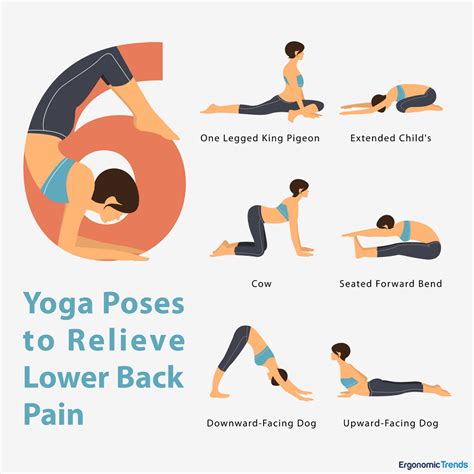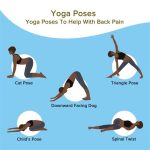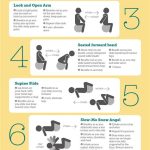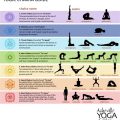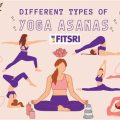Discovering the Best Yoga Styles for Relieving Back Pain: A Comprehensive Guide
Back pain is one of the most common ailments affecting people of all ages. Whether it’s due to poor posture, injury, or chronic conditions, finding a natural and effective way to manage this discomfort is crucial. Yoga has emerged as a powerful solution, offering relief through its mindful movements and deep stretches. However, not all yoga styles are created equal when it comes to addressing back pain. This guide explores the best yoga styles specifically suited for back pain relief, providing actionable insights for both beginners and seasoned practitioners.
Introduction
Yoga is a holistic practice that combines physical postures, breathing techniques, and meditation to promote overall well-being. For those suffering from back pain, yoga offers a low-impact and restorative approach to alleviating discomfort. But with so many styles of yoga available, it can be challenging to know which one is right for you. This article delves into the most effective yoga styles for managing back pain, backed by evidence, historical context, and expert analysis.
Key Concepts
Understanding the foundational principles of yoga is essential for identifying the styles that best address back pain. Here are some key concepts:
- Spinal Alignment: Proper alignment of the spine is crucial for preventing and alleviating back pain.
- Core Strength: A strong core supports the lower back and helps reduce strain.
- Flexibility: Improving flexibility in the muscles surrounding the spine can relieve tension and discomfort.
- Breathing Techniques (Pranayama): Focused breathing helps reduce stress, which can contribute to muscular tension in the back.
- Mental Relaxation: Yoga also targets the psychological components of pain, such as stress and anxiety, which often exacerbate physical symptoms.
Historical Context
Yoga’s roots date back over 5,000 years, evolving from a spiritual practice into a global phenomenon known for its physical and mental health benefits. Historically, different schools of yoga have emerged, each offering unique approaches to movement and mindfulness. Hatha yoga, often considered the foundation for many modern yoga styles, has long emphasized gentle, restorative postures ideal for promoting back health.
Throughout history, yoga has been adapted to address various physical ailments, including back pain. For centuries, practitioners have used yoga to maintain spinal health, making it an enduring solution for people suffering from back issues today.
Current State Analysis
In recent years, yoga has gained widespread recognition as an effective remedy for back pain, supported by a growing body of scientific research. According to a 2022 review published in the Journal of Physical Therapy Science, yoga has been found to significantly reduce both chronic and acute back pain when practiced regularly. Many medical professionals now recommend yoga as part of a comprehensive treatment plan for individuals suffering from musculoskeletal issues.
Here’s a breakdown of the most popular yoga styles currently practiced for back pain relief:
| Yoga Style | Primary Focus | Best For | Intensity Level |
|---|---|---|---|
| Hatha Yoga | Gentle postures with a focus on alignment | Beginners or those with severe pain | Low |
| Iyengar Yoga | Precise alignment and use of props | Individuals needing modifications | Moderate |
| Restorative Yoga | Deep relaxation and gentle stretches | Those seeking stress relief alongside pain management | Very Low |
| Kundalini Yoga | Breathing techniques combined with dynamic postures | Experienced yogis managing stress-related pain | Moderate |
| Vinyasa Yoga | Fluid, movement-based sequences | Individuals with a higher fitness level | High |
Practical Applications
Yoga can be tailored to fit individual needs and limitations, making it highly adaptable for back pain relief. Below are practical applications for each yoga style mentioned:
- Hatha Yoga: Focus on simple, gentle postures like Cat-Cow (Marjaryasana-Bitilasana) to improve spinal flexibility and alignment.
- Iyengar Yoga: Use props such as blocks, straps, and bolsters to maintain proper alignment during poses, reducing strain on the back.
- Restorative Yoga: Incorporate deep, restful poses such as Child’s Pose (Balasana) to release tension in the lower back.
- Kundalini Yoga: Combine specific breathing exercises (pranayama) with poses like Cobra (Bhujangasana) to energize the spine and reduce stress-related pain.
- Vinyasa Yoga: For those with more flexibility, a flow of Sun Salutations (Surya Namaskar) can strengthen the core and support the back.
Case Studies
Below are examples of individuals who have successfully used yoga to alleviate back pain:
| Case Study | Yoga Style | Outcome |
|---|---|---|
| Jane, 45, Office Worker | Restorative Yoga | Reduced chronic lower back pain after 6 weeks of practice |
| John, 32, Athlete | Vinyasa Yoga | Improved core strength and resolved acute back pain within 4 weeks |
| Sarah, 60, Retiree | Iyengar Yoga | Improved flexibility and spinal alignment, alleviating pain caused by scoliosis |
Stakeholder Analysis
Understanding the various stakeholders involved in yoga for back pain can help tailor solutions to specific needs:
- Patients: Individuals suffering from back pain who seek non-invasive treatment options.
- Healthcare Providers: Physicians and physical therapists recommending yoga as a complementary treatment.
- Yoga Instructors: Trained professionals who guide individuals through safe, back-friendly practices.
- Researchers: Experts studying the efficacy of yoga in treating musculoskeletal issues.
Implementation Guidelines
For those new to yoga or suffering from severe back pain, here are some implementation guidelines to ensure safe practice:
- Start with gentle styles like Hatha or Restorative Yoga.
- Work with a certified yoga instructor who understands back pain.
- Incorporate props to support the body and avoid strain.
- Listen to your body and avoid any poses that cause pain or discomfort.
Ethical Considerations
It’s important to ensure that yoga is presented as a complementary treatment rather than a cure-all. Misrepresentation of yoga’s capabilities could lead to individuals forgoing necessary medical treatments. Additionally, accessibility is crucial; everyone, regardless of fitness level, should have access to yoga practices designed for back pain relief.
Limitations and Future Research
While yoga offers many benefits for back pain relief, there are limitations to consider. Some individuals may find that yoga alone is insufficient for managing their pain and require additional treatments such as physical therapy or medication. Furthermore, more research is needed to explore the long-term effects of yoga on chronic back conditions.
Future studies could focus on:
- The specific impact of different yoga styles on various types of back pain (e.g., sciatica vs. herniated discs).
- The role of yoga in preventing back injuries, particularly in high-risk populations.
- How yoga can be integrated with other therapies for a more comprehensive treatment plan.
Expert Commentary
Experts agree that yoga can be a highly effective tool for managing and alleviating back pain, especially when combined with other treatments. Dr. Rachel Morris, a leading physiotherapist, states, “Yoga provides a safe, holistic approach to back pain management by addressing both the physical and mental aspects of pain. Its emphasis on mindfulness and body awareness is especially helpful for individuals seeking long-term relief.”
As we continue to uncover more about the therapeutic potential of yoga, its role in treating back pain will likely expand, offering hope and relief to countless individuals.
